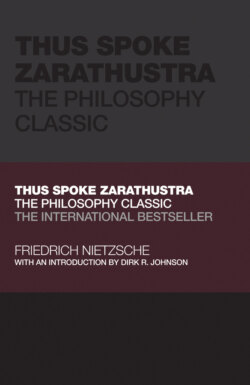Читать книгу Thus Spoke Zarathustra - FRIEDRICH NIETZSCHE, Friedrich Nietzsche - Страница 19
THE THREE SONGS
ОглавлениеIn the midway point of Part Two, there are the three “Song” sections: “The Night Song,” “The Dance Song,” and “The Grave Song.” In “The Night Song,” Zarathustra compares his yearning soul to a gushing night time fountain. He transfigures the pain of his solitude into a poem of exquisite beauty. Zarathustra revels in his own independence but remains cut off from the world around him.
The section initiates a transition. While Zarathustra first sought converts to the Übermensch, he now retreats into himself and finds solace in an unfulfilled yearning.
This mood continues and deepens in “The Dance Song.” Zarathustra encounters a group of girls frolicking in a woodland enclave. Though enchanted, his mood darkens, and he complains about a spirit of gravity. Two (metaphoric) women vie for his attention: Life and Wisdom. While Life is seductive and tries to pull him back into life, Wisdom beckons him to uncover life's mysteries.
In “The Grave Song,” Zarathustra lashes out at his enemies. They are the figures in his childhood that ruined his immediacy and naiveté towards life by (dis)orienting him to false (Christian) ideals. They sullied his spontaneous childlike affirmation of life.
This deep‐rooted suspicion toward life stands at the core of his personal spirit of gravity. It always threatens to pull Zarathustra away from life and towards false, otherworldly ideals, and it triggers a residual disgust with the world.
